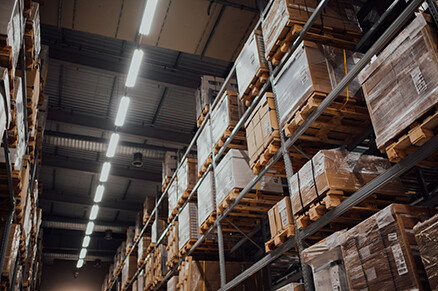For several years, e-commerce behemoth Amazon has been scrutinized by what many call an alarming increase in workplace-related injuries, specifically at the warehouses where inventory is stored and shipped from. Workers’ compensation laws exist for everyone, including industry giants like Amazon. Eason & Tambornini brings over 25 years of experience fighting for injured employees at large and small businesses.
Learn more about our Sacramento Workers’ Compensation Attorney Services.
 Recent investigations and data point to an increase in warehouse injuries at Amazon, but figuring out why their frequency is increasing is complicated. Speculation about the pressure to move items out the door to the consumer at an increasingly faster pace is a logical guess.
Recent investigations and data point to an increase in warehouse injuries at Amazon, but figuring out why their frequency is increasing is complicated. Speculation about the pressure to move items out the door to the consumer at an increasingly faster pace is a logical guess.
A 2020 report based on research conducted by the National Council for Occupational Safety and Health (COSH) included data showing that injury rates at Amazon fulfillment centers were higher than others in the same industry. One detail that must be considered is that not all injuries are reported.
Amazon’s Response
For its part, Amazon has increased safety measures, such as making ergonomic improvements to worker areas, installing automated safety equipment and technology, and providing further training for both new and current employees. But at the end of the day, ever-increasing demand and productivity goals are likely still fueling the number of workplace injuries.
A 2022 Business Insider article states, “Last year, Amazon donated $12 million to the National Safety Council to ‘invent new ways to prevent’ musculoskeletal disorders. The company has rolled out workplace-safety initiatives at its warehouses, including a job-rotation program, daily stretches, and proper lifting and grip training.”
The same article noted that Amazon has not allowed workers to decrease their pace, even in light of more than ten years of media scrutiny and alarm-ringing by regulators. And in Amazon’s 2021 shareholders letter, Jeff Bezos was quoted in the article as saying, “We don’t set unreasonable performance goals,”
Third-Party Opinion
Also, in 2022, according to the same Business Insider article, three University of California at San Francisco ergonomists opined that the risk is not being reduced for all of Amazon’s safety interventions. The professors said, ” ‘the physical demands of the work processes are so high'” that only equipment changes, shorter workdays, or a slower pace of work will lower the risk of injury.”
A Partial Safety Net: Workers Compensation Benefits
While workers’ compensations benefits are in place to help workers once they have become injured or ill as a result of their job, the fact remains that they cannot prevent employers from pushing employees too hard, even to the limits of what is safe for the physical and sometimes mental well-being.
Most Dangerous Areas of a Warehouse
The five most common accidents in warehouses are the following equipment or activities:
- Loading docks
- Forklifts (80% of which involve a pedestrian)
- Conveyors
- Materials storage
- Manual lifting and handling
How to Protect Yourself
Whether employed in an Amazon warehouse or a smaller business facility where forklifts, loading docks, and productivity goals are a part of your workday, the experienced workers’ compensation attorneys at Eason & Tambornini are standing by to help.
Call (916) 438-1819 today for a free, no-obligation consultation to discuss your situation.
